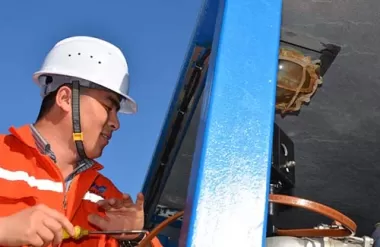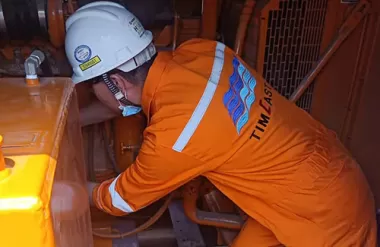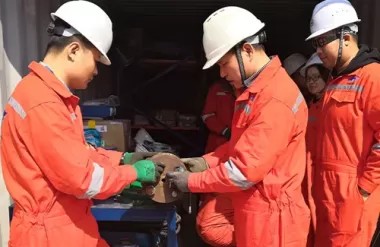Nov. 11, 2022
Pipeline cleaning and flushing are important aspects of cleaning and maintenance in offshore operations.
Pipeline cleaning and flushing
Chemical cleaning removes scale, deposits, or unwanted material from process equipment, piping any wetted/heated surface or any wetted or heated surface.
Chemical cleaning of pipelines is a temporary modification of pipelines using chemicals to remove dirt, debris, grease, rust, oil, scale, and other materials from the pipelines by circulating chemical cleaning from both ends of the pipeline using temporary piping and circulation pumping stations. The technique is flexible, has no requirements for the shape of the pipe, is fast, and cleans thoroughly.
The primary purpose of a hot oil flush is to remove contaminants and impurities from a control or lubricating fluid/hydraulic system that can affect the performance of the system, or indeed may affect the performance of components installed in a hydraulic system, such as an oil system. Hot oil flushing usually occurs after the chemical flushing process in the lubricant or hydraulic system.
It is particularly important when commissioning such equipment that the initial cleaning meets the strict criteria specified and that the cleaning procedure is followed in full.
In both cases, the flushing process involves loosening and removing contaminant particles by forcing fluid through the piping at high velocities. The flush must be completed at normal fluid velocity for a set period of time with some level of filtration in the system, but in some cases, a specific level of fluid contamination may also be required.
Chemical Cleaning
Pipeline cleaning reduces the risk of potential failure. Over time, the aging and corrosion of pipelines can make them more susceptible to failure. Regular pipeline cleaning and flushing programs reduce the risk of leaks and failures, thereby preventing potentially catastrophic damage to the natural environment and waterways, as well as the loss of large quantities of fluids or gases.
In addition, many compliance standards exist for maintaining or decommissioning pipelines. Failure to properly clean or flush pipelines in offshore or onshore applications can lead to non-compliance with these standards, exposing companies to potential fines or legal disputes.
As a result, there are a growing number of pipeline integrity laws on the books. In the U.S., the Pipeline Integrity Act exists to ensure that pipelines are inspected every five years if they carry liquids, and every seven years if they carry natural gas.
During the decommissioning phase, operators must comply with many regulatory requirements. Operators must ensure that these requirements are met before decommissioning work can proceed.
It can take up to three years to obtain a decommissioning permit. Therefore, it is best to work with a consultant who is familiar with the regulatory requirements in the area to ensure that all necessary permits are obtained prior to decommissioning.
Before decommissioning can begin, the operator's team must flush and clean all tanks, process equipment, and piping, and dispose of any existing residual hydrocarbons. Equipment on the platform must be moved, which may involve cutting piping and cables, separating deck modules, installing lifts, and performing structural reinforcement.
The team may also need to work underwater to remove marine life from the structure before it can be decommissioned. That's why it's essential to find a reliable team of pipe flushing services.
Are you preparing to find reliable pipe flushing services? If so, you've come to the right place. We have a wide range of pipe-flushing solutions and you can always contact us for expert advice.
Dec. 12, 2023
The Basics of Electric Heat Trace Technology In the world of industrial processes and temperature control, Electric Heat Trace (EHT) technology plays a crucial role.Nov. 23, 2023
Performing a Leak Test: Step-by-Step Guide A leak test is a crucial procedure to ensure the integrity of a system and identify potential leaks in pipes, joints, or containers.Nov. 08, 2023
Main Steps of a Flange Management Procedure Flange management is a critical aspect of maintaining the integrity and reliability of piping systems in various industries.

